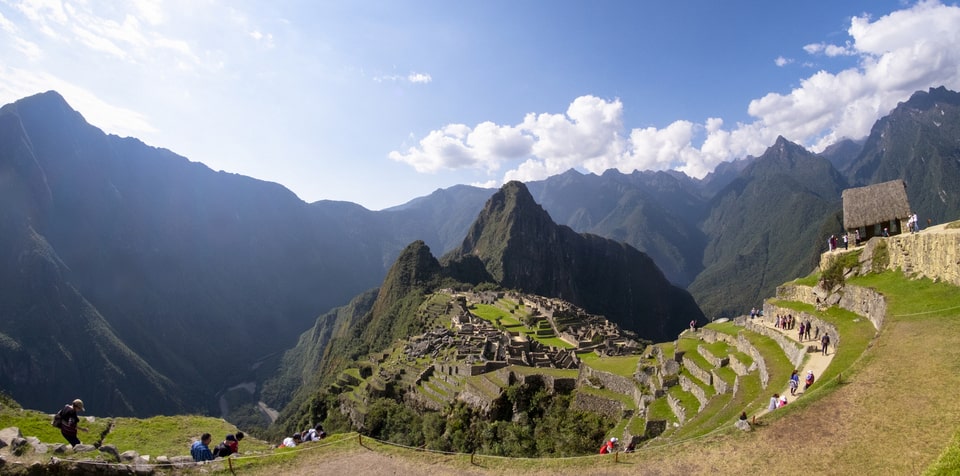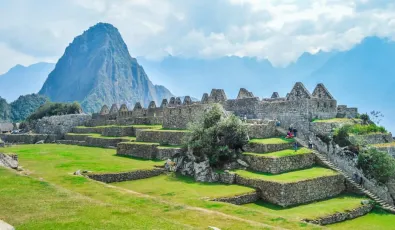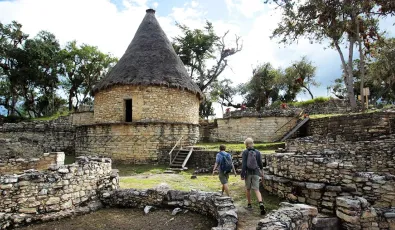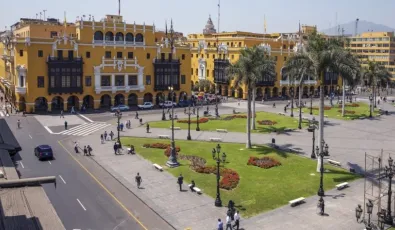Below is the New Seven Wonders of the World list as updated in 2007. This impressive man-made landmarks that represent significant engineering and construction achievements has been repeatedly changed and updated since their initial inclusion on this list in 2007.
The New 7 Wonders of the World
People have long been fascinated with the Seven Wonders of the World, compiling various lists over time. In 2007, people around the globe cast votes to select seven new wonders for consideration, which were announced at a ceremony held in Lisbon, Portugal in 2007. All seven wonders chosen as winners represent beauty, history and cultural importance; each site should be visited.
1. The Great Wall of China
The Great Wall of China is an iconic structure recognized worldwide. Constructed over 2,00 years ago as part of China's defenses against invaders, its massive length (over 13,170 miles/21,200 km) connects some breathtaking locations - it attracts many tourists annually who visit this tourist hot spot.
2. Petra - Jordan
Petra is an archaeological site located between the Red Sea and Dead Sea that has long been revered. Recognized as a UNESCO World Heritage Site, Petra is well known for its rock-cut buildings and water system - two features which became hallmarks of Nabataean civilization from around 6th Century BCE to 2nd Century CE when Nabataeans lived here from trade routes as well as religious pilgrimages for early Christians - according to legend, when Moses struck a rock there and water began flowing.
3. Machu Picchu - Peru
Machu Picchu, Peru. Incorporated as an ancient Inca city in Peru's Cusco Region in 15th-century, Machu Picchu is often known as "the Lost City of the Incas." Located atop a mountain ridge above Urubamba Valley.
Pachacuti, the Inca Emperor, built Machu Picchu as a luxurious retreat for himself and his family to use during periods of peace within their empire; however, after its capture by Spain during the 16th century it lay unoccupied and became one of South America's premier tourist spots and recognized as a UNESCO World Heritage Site.
4. Chichén Itzá - Mexico
Chichen Itza is an iconic place in Mexico. Once home to the Maya people, this popular tourist spot now attracts millions each year. Additionally, Chichen Itza was named one of UNESCO World Heritage Sites as well as one of the Seven Wonders of the Modern World back in 1988. Chichen Itza covers an expansive area of over two square kilometers! There are hundreds of temples, palaces and buildings still in great condition at Chichen Itza; El Castillo or Kukulkan's Temple being one of them. Chichen Itza's massive pyramid stands almost 30 meters and boasts 91 steps on each of its four sides, symbolizing the 365 days in a year. Chichen Itza features two notable buildings: Great Ball Court where Mayans would play similar to tennis, and Temple of the Warriors which contains many carved statues.
5. Christ the Redeemer - Brazil
The Christ the Redeemer statue can be found at Rio de Janeiro and depicts Jesus Christ. Located at Corcovado Mountain within Tijuca Forest National Park, its highest point is where it can be found - considered a major tourist attraction and seen as a symbol of Rio. Designed by French sculptor Paul Landowski and constructed by Brazilian engineer Heitor da Silva Costa between 1922-1931 by Heitor da Silva Costa it stands 98 feet high while it weighs 635 tons making it one of Brazil's iconic tourist spots and represents Christianity within Brazil itself.
6. Colosseum - Italy
It's located in Rome and known as the Flavian Amphitheatre; this large oval-shaped amphitheater also known as one of the greatest examples of Roman architecture and engineering was constructed out of concrete and stone and completed during Emperor Vespasian's rule (AD 72 - AD 80) under Titus' leadership as successor of its original planners (Titus). Tourists visit this landmark every year! The Colosseum first came into being during this era (AD 72 - AD 80), during Emperor Vespasian's rule under Emperor Vespasian; construction then continued under Titus who succeeded the person responsible in planning it - Titus took over construction from those responsible.
The Colosseum could accommodate from 50,000 to 80,000 people at once, who sat in rows that followed Rome's hill's slope. Its arena floor was made of wooden planks covered in sand which helped absorb blood during battle reenactments or executions of fighters or animals, keeping injuries to a minimum and providing protection from bloodloss injuries to both fighters and animals alike. Rooms and cages below the arena provided temporary homes for animals before their entry into public view. It has four levels of walls: its first three walls have arcades while windows and Corinthian columns while its upper level had little square holes that allowed air flow into its arena below.
7. Taj Mahal - India
The Taj Mahal can be found in India. Built of white marble, the Taj Mahal can be found in Agra, Uttar Pradesh. Shah Jahan of Mughal Empire constructed it as a tribute to Mumtaz Mahal - his third wife at that time - as part of her legacy and it remains one of the world's most spectacular buildings today. Construction started in 1632 and continued for twenty years; over 20,000 workers were hired for its creation.
This mausoleum stands on a high platform and features four minarets at each corner, housing Mumtaz Mahal's grave as well as Shah Jahan's. Additionally, detailed carvings decorate its exterior while precious stones add additional elegance. Millions visit every year; millions more visitors from India make the pilgrimage each year and it has been recognized by UNESCO World Heritage as a World Heritage Site.
The Ancient Seven Wonders of the World
These extraordinary monuments were constructed by powerful empires to awe their audiences with amazing feats of architecture that still stand today as testaments of man's achievement and talent. They remain timeless proofs that humans can achieve incredible things.
1. The Great Pyramid of Giza (Egypt)
The Great Pyramid of Giza can be found in Egypt. It's one of the seven wonders of antiquity and dates back more than 4,500 years - many believe that its construction may have been to serve as Pharaoh Khufu's burial place.
This pyramid stands 139 meters (455 feet), made out of approximately 2.3 million limestone blocks and took roughly 23 years and 20,000 workers to construct.
The Great Pyramid of Giza stands as one of the world's greatest engineering feats and remains one of the most mysterious structures ever constructed.
2. The Mausoleum of Halicarnassus (Turkey)
The Mausoleum of Halicarnassus is an historical site located in Turkey. When Greek King Mausolus passed away in 350 BCE, leaving behind both an unhappy widow and an impressive legacy, Artemisia decided to construct a tomb that befitted his status and legacy. She hired top architects and artists of that era to construct and embellish what later became known as Halicarnassus' Mausoleum.
The Mausoleum, completed in 325 BCE and standing 140 feet high, featured elaborate carvings depicting events from Mausolus' life outside as well as an exquisite statue depicting him with Artemisia who were holding hands as they looked over their city under Mausolus' rule inside.
The Mausoleum was one of the Seven Wonders of Ancient World and stood for over 1500 years, becoming one of the Seven Wonders when earthquakes destroyed it in 12th Century CE. Today only fragments remain as evidence of its grandeur; yet its legacy lives on.
3. The statue of Zeus (Greece)
The Zeus statue stands as one of the Seven Wonders of the World and can be found throughout ancient Greece, serving as a great example of Greek art. It depicts Zeus seated on his throne; at 12 meters in height made out of bronze and marble it remains one of Greece's greatest achievements.
Antiochus IV Epiphanes, a Greek ruler, asked Phidias, a sculptor, to craft him a statue. When completed in 432 BC and placed into the Temple of Zeus at Olympia, it stood tall until being burned down in 391 AD due to a fire; yet somehow its statue survived intact! Later people moved the statue to Constantinople - now Istanbul - where it stood until being defaced by angry individuals in 1204 AD.
This statue is very well known, yet only some pieces remain today.
4. The Hanging Gardens of Babylon (Iraq)
The Hanging Gardens of Babylon can be found in Iraq. Once considered one of the Seven Wonders of the World, these gardens were built by King Nebuchadnezzar II around 600 BCE to mimic Eden from myths; trees, flowers, and plants from different regions around the globe were planted there for watering by channels and aqueducts; unfortunately however, earthquakes and war in the first century CE caused their demise.
5. The Lighthouse of Alexandria (Egypt)
The Lighthouse of Alexandria stands as one of the greatest feats of ancient engineering, constructed nearly 2,000 years ago using blocks of limestone and granite that could be seen from far across the ocean. At that time it was one of the tallest structures ever erected. At that height it could be seen for miles around. It is one of Egypt's greatest wonders!
The Lighthouse of Alexandria was one of the Seven Wonders of the World and remains an incredible structure to this day, impressing people even today with its remarkable engineering design and construction by ancient engineers who still continue to impress us today with their smarts and craftsmanship. If visiting Egypt, make sure you visit this incredible archaeological site!
6. The Temple of Artemis (Turkey)
The Temple of Artemis can be found in Turkey and was one of the Seven Wonders of the Ancient World when constructed around 550 BCE at Ephesus, Turkey - dedicated to goddess Artemis. Unfortunately, fire destroyed it again in 356 BCE; Alexander the Great rebuilt it, only for another fire to burn it down again two hundred sixty two. Now recognized as World Heritage Site by UNESCO, its remains can be visited today as World Heritage Sites.
7. The Colossus of Rhodes (Turkey)
The Colossus of Rhodes is a statue located in Turkey. This massive statue honoring Greek god Helios was constructed in Rhodes City on its namesake Greek island and counts among one of the Seven Wonders of Antiquity.
In 280 BCE, an enormous statue called the Sistine Column was completed and stood over 30 meters (100 feet). An earthquake in 226 BCE destroyed it completely and has never been rebuilt since.






Add new comment